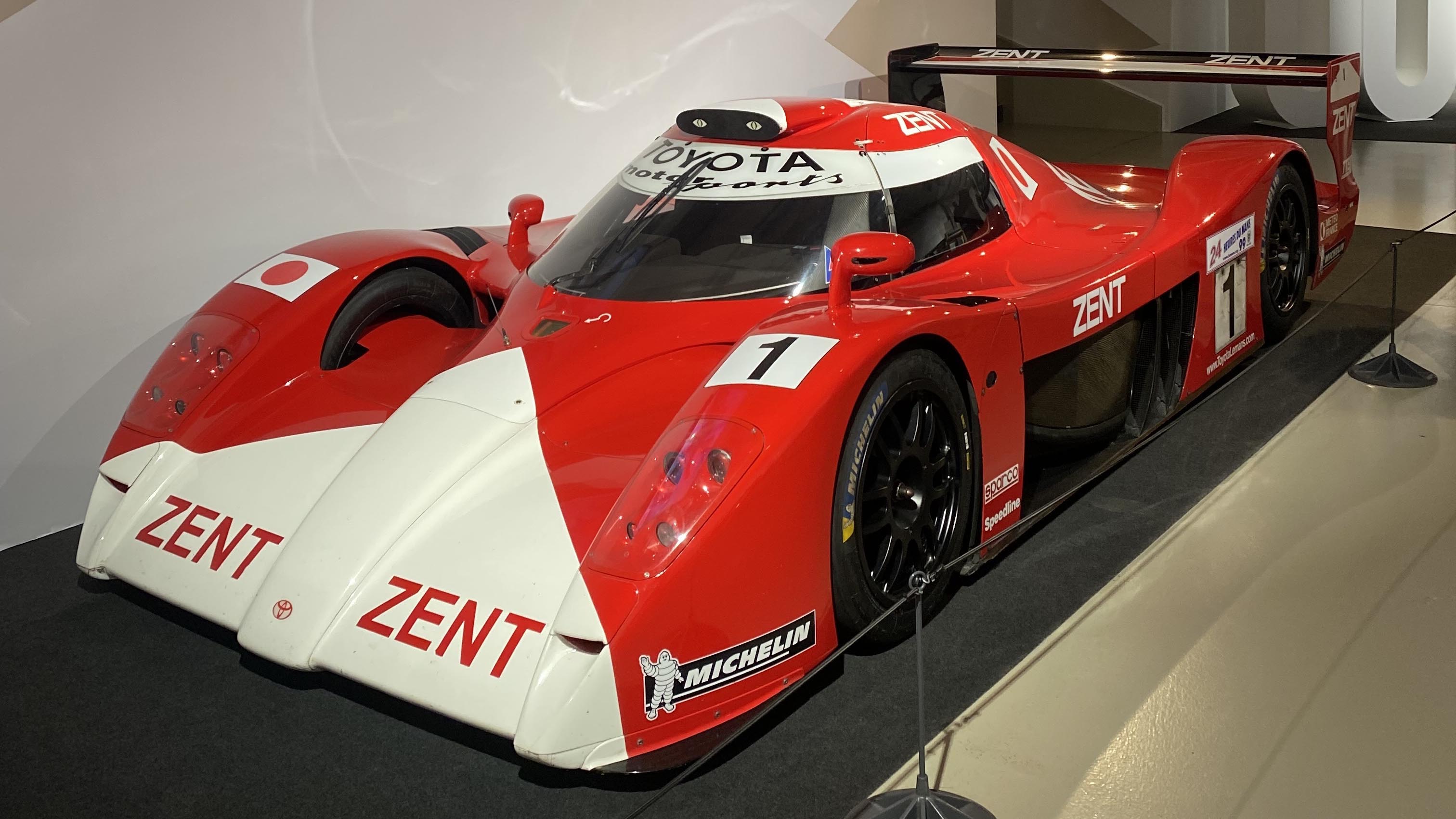
THESE ARE 10 MUST-SEE PROTOTYPE RACERS AT THE LE MANS MUSEUM
Toyota GT-One
One of the great Gran Turismo cars. From the huge indentations along the engine cover behind the cockpit to the equally sizable straight-cut rear wing, Toyota’s second-place finisher at the 1999 24 Hours of Le Mans is the perfect example of unbarred, no-compromise engineering from the golden era of Nineties Japan.
Porsche 917
It’s strange to think the Porsche 917 is now over 60 years old: it may look a tad on the vintage side, but the design is still wild enough to give modern prototype racers a run for their money. What stuck out for us is just how long the 917 is, despite appearing otherwise in Google images. Aerodynamically, that’s a big reason why it doesn’t Vmax until 240mph too.
,Jaguar XJR-9
Wheel covers on racing cars are cool, but closed wheel arches are even cooler. Perhaps the most famous example of this is the Jaguar XJR-9, with its iconic Silk Cut livery and adoption of both straight and curved exterior panelling. It also won the 1988 World Sports Prototype Championship, securing victories at Daytona and that ol’ French race in the process.
,Nissan GT-R LM Nismo
The only slightly modern car on this list, despite being… a decade old. Though the GT-R LM Nismo shares the same name as Nissan’s road-going icon, mechanically, there are very few crossovers involved. The V6 engine itself, for instance, was co-developed by Nismo and Cosworth, and positioned ahead of the driver as opposed to behind like most of the LM’s competitors. Though it was a failure in racing, it does look pretty bloomin' cool.
Peugeot 908
Just four years earlier than the LM came Peugeot’s 908, which secured second and third at Le Mans in 2011. But, more importantly, it gained five victories in seven races that year to claim the championship and secure its place among the all-time greats. This was still during the period when Peugeot was making the first-generation 308 CC, by the way, which makes the achievement that much more impressive.
,Bentley Speed 8
British Racing Green has rarely looked (or sounded) better than it does with the Speed 8. That’s not just because of the brilliant styling, we’d like to point out: it’s largely thanks to this being the last British car to win at Le Mans. Yep, since the big Bentley roared to the chequered flag in 2003, it’s been mostly dominated by Audi and Porsche, with recent purple patches for Toyota and Ferrari. It’s high time Bentley did something about that, we think.
Audi R8
What makes the Speed 8’s achievement even more impressive is that it disturbed the momentum of another great: the Audi R8. No, not the V10-powered Asda runner. This one was introduced in 2000 and won five out of the six Le Mans between that year and 2006, with the only blip being orchestrated by Bentley. As you’d imagine, its list of accolades is quite… big.
,Porsche 962
Though, the R8’s title cabinet isn’t quite as large as the one held by the Porsche 962. With a headline figure of 21 different constructors’ championships in the space of about 10 years. Quite simply, this is one of, if not the greatest racing car ever made. And what’s cooler is that, in certain corners of the world, road-legal versions have been created for trips to the greengrocers and back. Wild.
,Peugeot 905
Another Peugeot great which invokes a serial bout of nostalgia for gamers. Powered by a naturally aspirated V10 and six-speed sequential manual pairing, the large-winged speed machine from Sochaux claimed back-to-back Le Mans wins in the early Nineties. Oh, it also retired with more than a 50 per cent hit rate overall from the 17 races it entered. Sensationnelle.
,Mazda 787B
Leave the best till last, right? The 787B’s route to victory at Le Mans in 1991 was far from easy, particularly since it was competing directly with the relentless Mercedes-Sauber C9. But it prevailed in the end to become the first-ever Japanese prototype to win the famous race. It’s also gone down as arguably the single greatest-sounding thing produced by us as a species since our ancient ancestors first heard the crackling of fire.
2024-07-08T04:06:51Z dg43tfdfdgfd